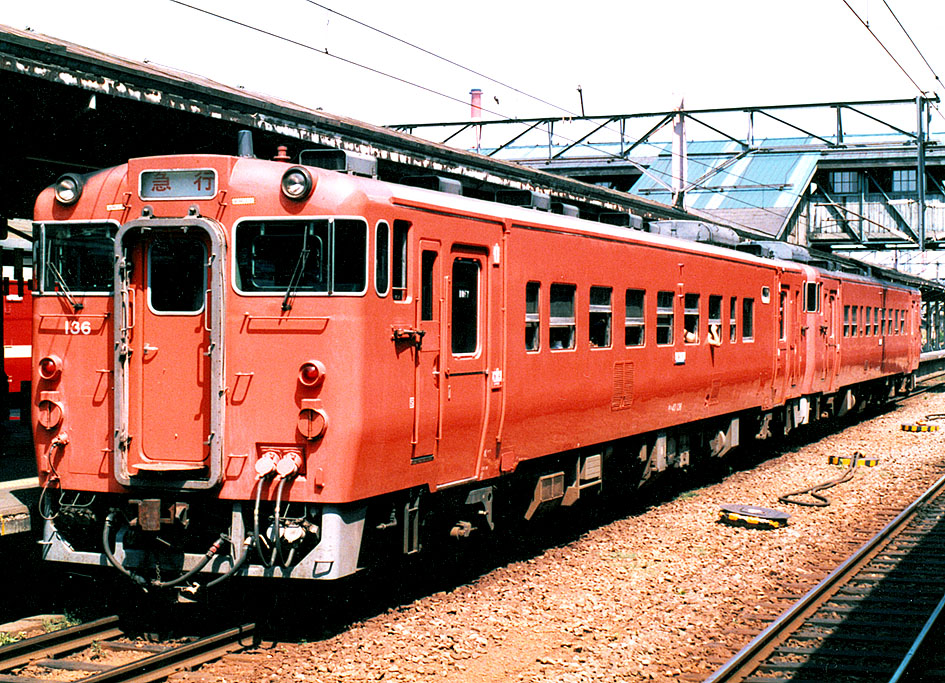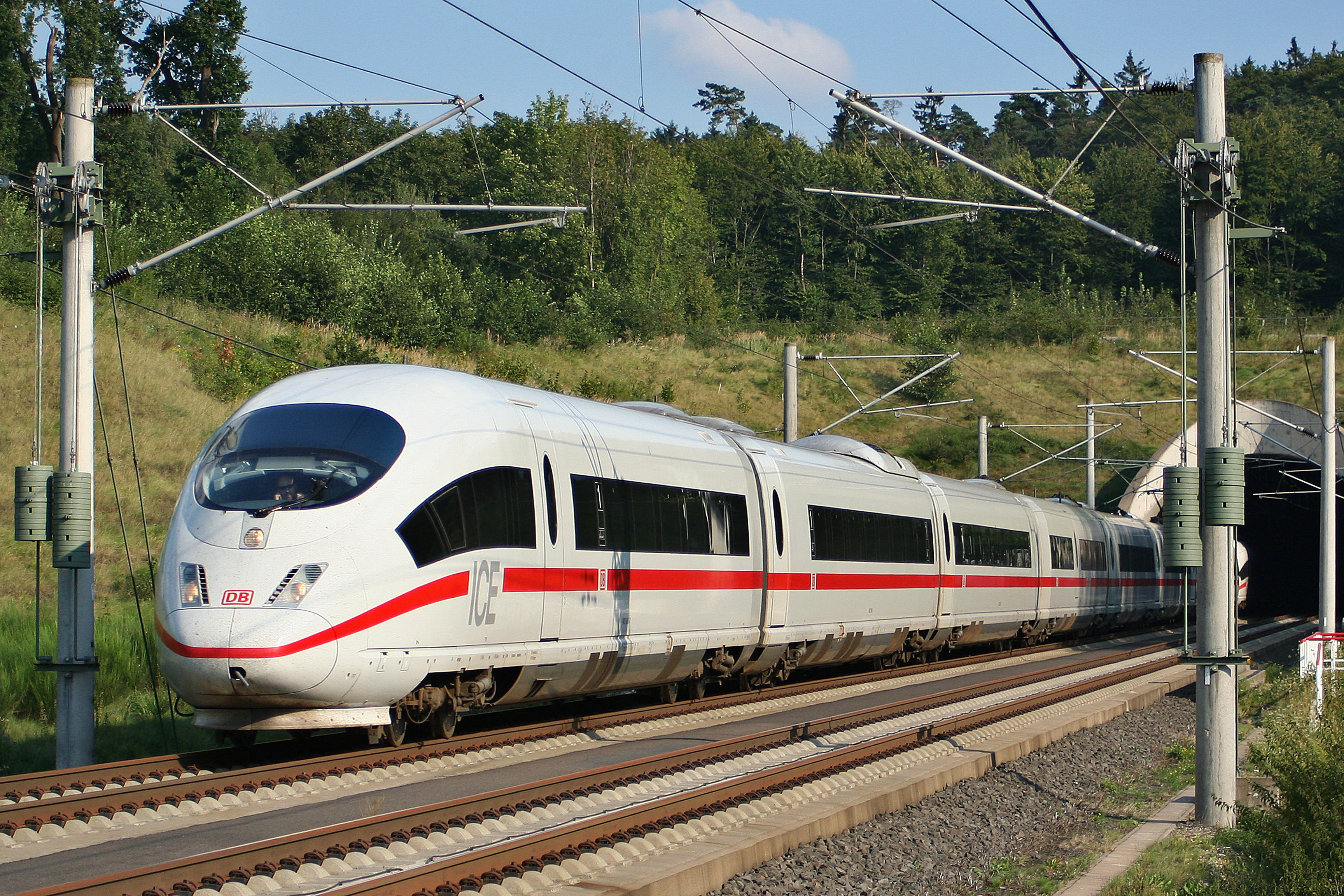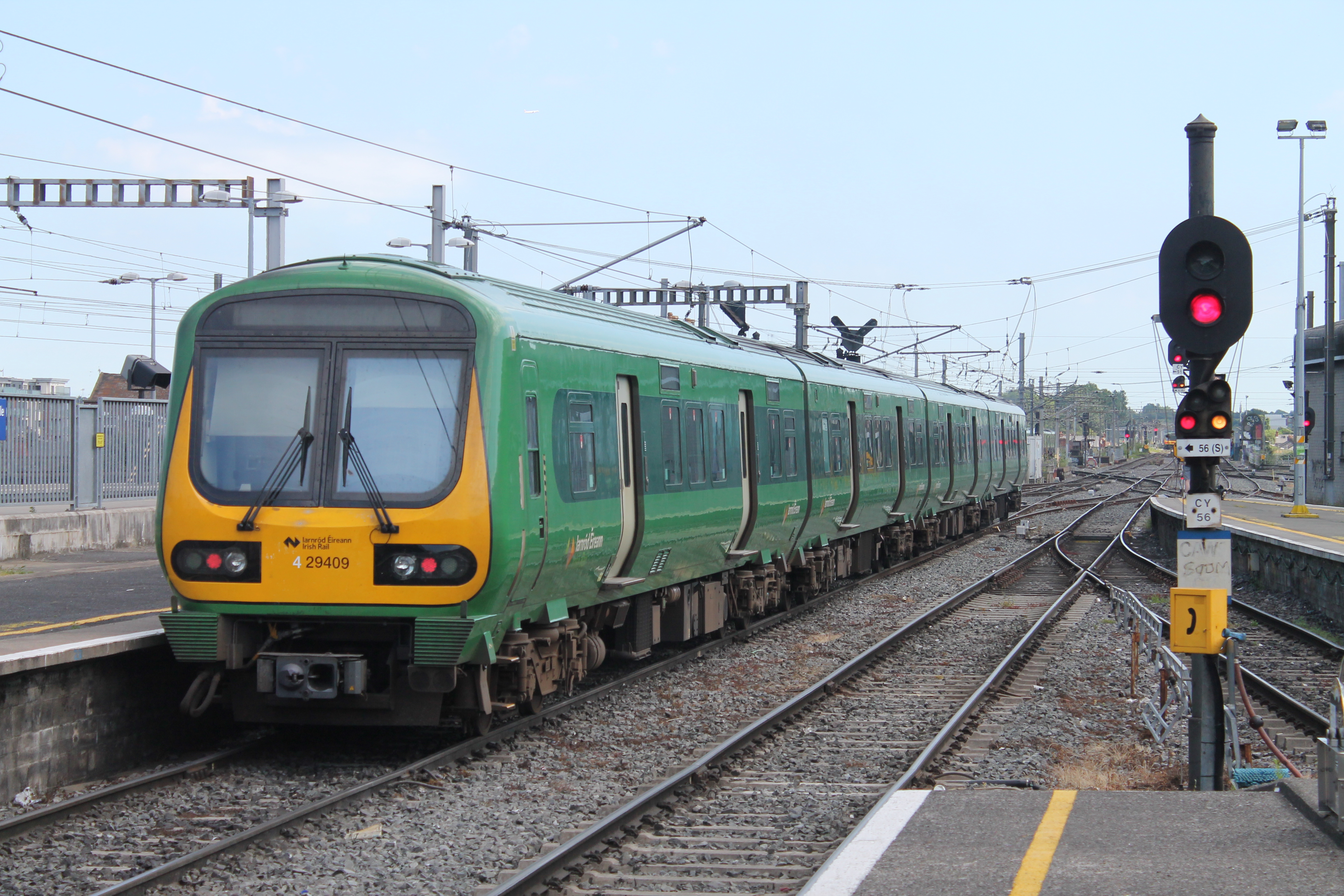|
Pesa (rolling Stock Manufacturer)
Pesa SA (Polish: Pojazdy Szynowe Pesa Bydgoszcz) is a Polish rolling stock manufacturer based in Bydgoszcz. The name 'Pesa' derives from the initials PS which stand for ''Pojazdy Szynowe,'' 'railway vehicles' in Polish. Pesa is a successor to the Bydgoszcz repair shops of PKP ''Polskie Koleje Państwowe,'' Polish State Railways. From the 1950s until 1998 the repair shops operated under the name ZNTK Bydgoszcz, ''Zakłady Naprawcze Taboru Kolejowego,'' 'Repair Shop for Railway Rolling Stock' in Bydgoszcz. For most of its history the Bydgoszcz shop overhauled and repaired steam locomotives and freight cars. After the collapse in 1989 of the Communist regime in Poland the ZNTK Bydgoszcz repair shop was spun off in 1991 as an independent company. This led to a re-thinking of the firm's activities, and in 2001 the company was renamed ''Pojazdy Szynowe Pesa Spółka Akcyjna Holding'' (its present name) and its activities were re-oriented away from repair to the construction of ... [...More Info...] [...Related Items...] OR: [Wikipedia] [Google] [Baidu] |
Joint-stock Company
A joint-stock company (JSC) is a business entity in which shares of the company's stock can be bought and sold by shareholders. Each shareholder owns company stock in proportion, evidenced by their shares (certificates of ownership). Shareholders are able to transfer their shares to others without any effects to the continued existence of the company. In modern-day corporate law, the existence of a joint-stock company is often synonymous with incorporation (possession of legal personality separate from shareholders) and limited liability (shareholders are liable for the company's debts only to the value of the money they have invested in the company). Therefore, joint-stock companies are commonly known as corporations or limited companies. Some jurisdictions still provide the possibility of registering joint-stock companies without limited liability. In the United Kingdom and in other countries that have adopted its model of company law, they are known as unlimited ... [...More Info...] [...Related Items...] OR: [Wikipedia] [Google] [Baidu] |
History Of Poland (1918–1939)
The history of interwar Poland comprises the period from the revival of the independent Polish state in 1918, until the Invasion of Poland from the West by Nazi Germany in 1939 at the onset of World War II, followed by the Soviet Union from the East two weeks later. The two decades of Poland's independence between the world wars are known as the ''Interbellum''. * * * Poland re-emerged in November 1918 after more than a century of partitions by Austria-Hungary, the German, and the Russian Empires.Norman Davies. ''Heart of Europe: The Past in Poland's Present''. Oxford University Press. 2001. pp. 100-101. Its independence was confirmed by the victorious powers through the Treaty of Versailles of June 1919, and most of the territory won in a series of border wars fought from 1918 to 1921. Poland's frontiers were settled in 1922 and internationally recognized in 1923. The Polish political scene was democratic but chaotic until Józef Piłsudski (1867–1935) seized power i ... [...More Info...] [...Related Items...] OR: [Wikipedia] [Google] [Baidu] |
Diesel Multiple Unit
A diesel multiple unit or DMU is a multiple-unit train powered by on-board diesel engines. A DMU requires no separate locomotive, as the engines are incorporated into one or more of the carriages. Diesel-powered single-unit railcars are also generally classed as DMUs. Diesel-powered units may be further classified by their transmission type: diesel–mechanical DMMU, diesel–hydraulic DHMU, or diesel–electric DEMU. Design The diesel engine may be located above the frame in an engine bay or under the floor. Driving controls can be at both ends, on one end, or in a separate car. Types by transmission DMUs are usually classified by the method of transmitting motive power to their wheels. Diesel–mechanical In a diesel–mechanical multiple unit (DMMU), the rotating energy of the engine is transmitted via a Transmission (mechanics), gearbox and driveshaft directly to the wheels of the train, like a automobile, car. The transmissions can be shifted manually by the driver, a ... [...More Info...] [...Related Items...] OR: [Wikipedia] [Google] [Baidu] |
Deutsche Bahn
(, ; abbreviated as DB or DB AG ) is the national railway company of Germany, and a state-owned enterprise under the control of the German government. Headquartered in the Bahntower in Berlin, it is a joint-stock company ( AG). DB was founded after the merger between Deutsche Bundesbahn and the East German Deutsche Reichsbahn in 1994 after the unification of Germany and has been operating ever since. is the second-largest transport company in Germany, after the German postal and logistics company / DHL. DB provides both long-distance and regional transport, serving around 132 million long distance passengers and 1.6 billion regional passengers in 2022. In 2022, DB transported 222 million tons of cargo. Company profile The group is divided into several companies, including '' DB Fernverkehr'' (long-distance passenger), '' DB Regio'' (local passenger services) and '' DB Cargo'' (rail freight). The Group subsidiary '' DB InfraGO'' also operates large parts of the German ... [...More Info...] [...Related Items...] OR: [Wikipedia] [Google] [Baidu] |
Diesel Multiple Unit
A diesel multiple unit or DMU is a multiple-unit train powered by on-board diesel engines. A DMU requires no separate locomotive, as the engines are incorporated into one or more of the carriages. Diesel-powered single-unit railcars are also generally classed as DMUs. Diesel-powered units may be further classified by their transmission type: diesel–mechanical DMMU, diesel–hydraulic DHMU, or diesel–electric DEMU. Design The diesel engine may be located above the frame in an engine bay or under the floor. Driving controls can be at both ends, on one end, or in a separate car. Types by transmission DMUs are usually classified by the method of transmitting motive power to their wheels. Diesel–mechanical In a diesel–mechanical multiple unit (DMMU), the rotating energy of the engine is transmitted via a Transmission (mechanics), gearbox and driveshaft directly to the wheels of the train, like a automobile, car. The transmissions can be shifted manually by the driver, a ... [...More Info...] [...Related Items...] OR: [Wikipedia] [Google] [Baidu] |
Electric Multiple Unit
An electric multiple unit or EMU is a multiple-unit train consisting of self-propelled carriages using electricity as the motive power. An EMU requires no separate locomotive, as electric traction motors are incorporated within one or a number of the carriages. An EMU is usually formed of two or more semi-permanently coupled carriages. However, electrically powered single-unit railcars are also generally classed as EMUs. The vast majority of EMUs are passenger trains but versions also exist for carrying mail. EMUs are popular on intercity, commuter, and suburban rail networks around the world due to their fast acceleration and pollution-free operation, and are used on most rapid-transit systems. Being quieter than diesel multiple units (DMUs) and locomotive-hauled trains, EMUs can operate later at night and more frequently without disturbing nearby residents. In addition, tunnel design for EMU trains is simpler as no provision is needed for exhausting fumes, although retrofitting ... [...More Info...] [...Related Items...] OR: [Wikipedia] [Google] [Baidu] |
Kazakhstan
Kazakhstan, officially the Republic of Kazakhstan, is a landlocked country primarily in Central Asia, with a European Kazakhstan, small portion in Eastern Europe. It borders Russia to the Kazakhstan–Russia border, north and west, China to the China–Kazakhstan border, east, Kyrgyzstan to the Kazakhstan–Kyrgyzstan border, southeast, Uzbekistan to the Kazakhstan–Uzbekistan border, south, and Turkmenistan to the Kazakhstan–Turkmenistan border, southwest, with a coastline along the Caspian Sea. Its capital is Astana, while the largest city and leading cultural and commercial hub is Almaty. Kazakhstan is the world's List of countries and dependencies by area, ninth-largest country by land area and the largest landlocked country. Steppe, Hilly plateaus and plains account for nearly half its vast territory, with Upland and lowland, lowlands composing another third; its southern and eastern frontiers are composed of low mountainous regions. Kazakhstan has a population of 20 mi ... [...More Info...] [...Related Items...] OR: [Wikipedia] [Google] [Baidu] |
Germany
Germany, officially the Federal Republic of Germany, is a country in Central Europe. It lies between the Baltic Sea and the North Sea to the north and the Alps to the south. Its sixteen States of Germany, constituent states have a total population of over 84 million in an area of , making it the most populous member state of the European Union. It borders Denmark to the north, Poland and the Czech Republic to the east, Austria and Switzerland to the south, and France, Luxembourg, Belgium, and the Netherlands to the west. The Capital of Germany, nation's capital and List of cities in Germany by population, most populous city is Berlin and its main financial centre is Frankfurt; the largest urban area is the Ruhr. Settlement in the territory of modern Germany began in the Lower Paleolithic, with various tribes inhabiting it from the Neolithic onward, chiefly the Celts. Various Germanic peoples, Germanic tribes have inhabited the northern parts of modern Germany since classical ... [...More Info...] [...Related Items...] OR: [Wikipedia] [Google] [Baidu] |
Hungary
Hungary is a landlocked country in Central Europe. Spanning much of the Pannonian Basin, Carpathian Basin, it is bordered by Slovakia to the north, Ukraine to the northeast, Romania to the east and southeast, Serbia to the south, Croatia and Slovenia to the southwest, and Austria to the west. Hungary lies within the drainage basin of the Danube, Danube River and is dominated by great lowland plains. It has a population of 9.6 million, consisting mostly of ethnic Hungarians, Hungarians (Magyars) and a significant Romani people in Hungary, Romani minority. Hungarian language, Hungarian is the Languages of Hungary, official language, and among Languages of Europe, the few in Europe outside the Indo-European languages, Indo-European family. Budapest is the country's capital and List of cities and towns of Hungary, largest city, and the dominant cultural and economic centre. Prior to the foundation of the Hungarian state, various peoples settled in the territory of present-day Hun ... [...More Info...] [...Related Items...] OR: [Wikipedia] [Google] [Baidu] |
Gdańsk
Gdańsk is a city on the Baltic Sea, Baltic coast of northern Poland, and the capital of the Pomeranian Voivodeship. With a population of 486,492, Data for territorial unit 2261000. it is Poland's sixth-largest city and principal seaport. Gdańsk lies at the mouth of the Motława River and is situated at the southern edge of Gdańsk Bay, close to the city of Gdynia and the resort town of Sopot; these form a metropolitan area called the Tricity, Poland, Tricity (''Trójmiasto''), with a population of approximately 1.5 million. The city has a complex history, having had periods of Polish, German and self rule. An important shipbuilding and trade port since the Middle Ages, between 1361 and 1500 it was a member of the Hanseatic League, which influenced its economic, demographic and #Architecture, urban landscape. It also served as Poland's principal seaport and was its largest city since the 15th century until the early 18th century when Warsaw surpassed it. With the Partition ... [...More Info...] [...Related Items...] OR: [Wikipedia] [Google] [Baidu] |
Warsaw
Warsaw, officially the Capital City of Warsaw, is the capital and List of cities and towns in Poland, largest city of Poland. The metropolis stands on the Vistula, River Vistula in east-central Poland. Its population is officially estimated at 1.86 million residents within a Warsaw metropolitan area, greater metropolitan area of 3.27 million residents, which makes Warsaw the List of cities in the European Union by population within city limits, 6th most-populous city in the European Union. The city area measures and comprises List of districts and neighbourhoods of Warsaw, 18 districts, while the metropolitan area covers . Warsaw is classified as an Globalization and World Cities Research Network#Alpha 2, alpha global city, a major political, economic and cultural hub, and the country's seat of government. It is also the capital of the Masovian Voivodeship. Warsaw traces its origins to a small fishing town in Masovia. The city rose to prominence in the late 16th cent ... [...More Info...] [...Related Items...] OR: [Wikipedia] [Google] [Baidu] |







